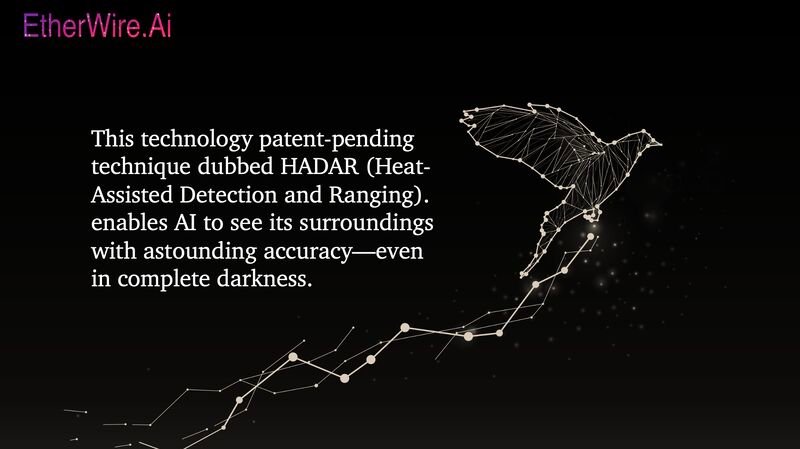
THERMAL IMAGING INNOVATION: AI SEES THROUGH DARKNESS
In the ever-evolving landscape of robotics and autonomy, a groundbreaking transformation is underway, driven by the emergence of a revolutionary technology: HADAR (Heat-Assisted Detection and Ranging). This patent-pending innovation, spearheaded by the adept minds at Purdue University, is ushering in a new era of possibilities. HADAR empowers artificial intelligence with an unprecedented level of environmental awareness, even when shrouded in complete darkness. Through the fusion of thermodynamic infrared sensing, advanced machine learning, and intricate thermal theory, HADAR is setting the stage for self-directed decision-making among robots and autonomous vehicles, marking a significant stride towards reducing dependency on human intervention.
Beyond Limits: Unveiling HADAR’s Transformative Approach
At the heart of HADAR lies its ability to surmount the challenges posed by traditional thermal imaging methods. Unlike its predecessors, which struggled with capturing textures, HADAR employs a physics-driven methodology to overcome this hurdle. The result? A technology that goes beyond the conventional, capable of distinguishing objects and their attributes with unparalleled accuracy. HADAR ventures beyond the realms of RGB and standard thermal detection, immersing itself in the vivid depiction of texture and depth.
Applications That Reshape Industries
The potential applications of HADAR ripple across diverse sectors, presenting opportunities that extend far beyond the realm of robotics. From revolutionizing agriculture and defense strategies to enhancing healthcare interventions, HADAR’s impact is poised to be transformative. The technology’s influence is also felt keenly in the domains of automated vehicles and interactions between humans and robots. With HADAR at the helm, the fusion of AI and sensory capabilities propels us into a future brimming with untapped possibilities.
Pioneering the Path to an AI-Powered Tomorrow
As HADAR’s visual prowess continues to evolve, the horizons of the AI landscape expand in kind. The technology not only shapes the present but paves a dynamic trajectory for an AI-propelled future. Its potential to infuse cognitive systems with advanced environmental awareness marks a leap towards innovation that remains uncharted.
In the journey to redefine robotics and autonomy, HADAR emerges as a beacon of transformative potential. From the laboratories of Purdue University to the precipice of global integration, this patent-pending phenomenon is propelling us towards a future where the lines between AI and the tangible world blur, setting the stage for a new era of limitless exploration.
